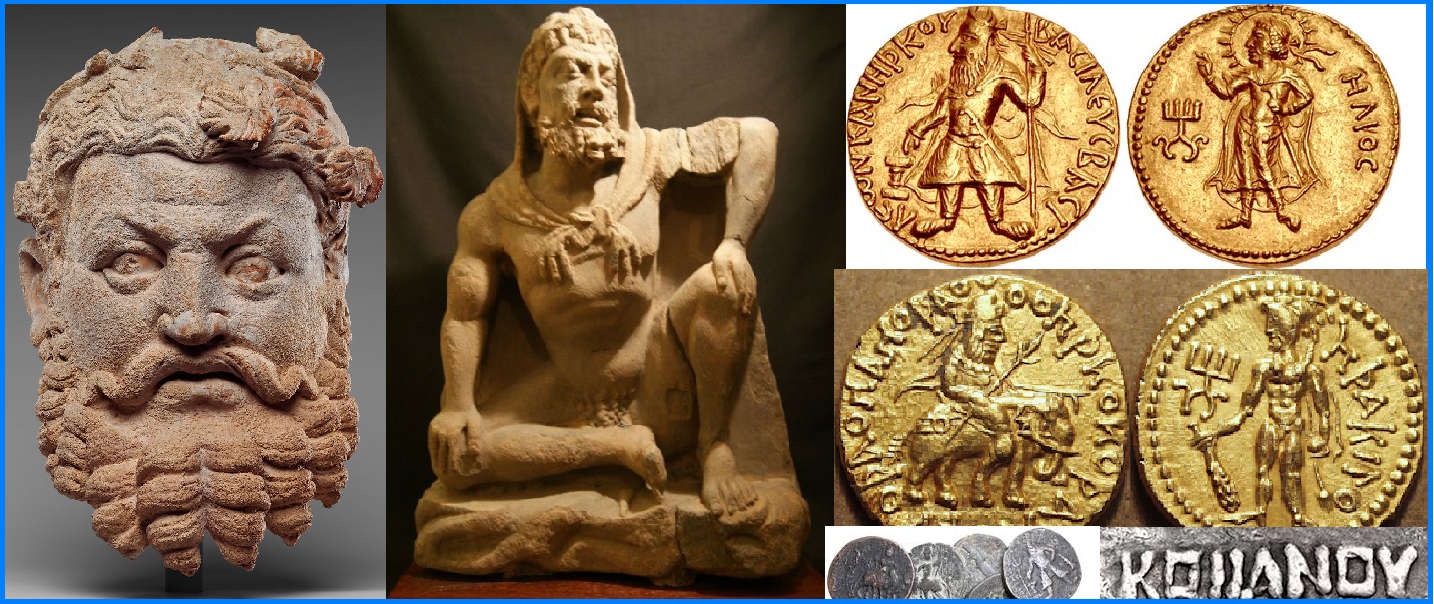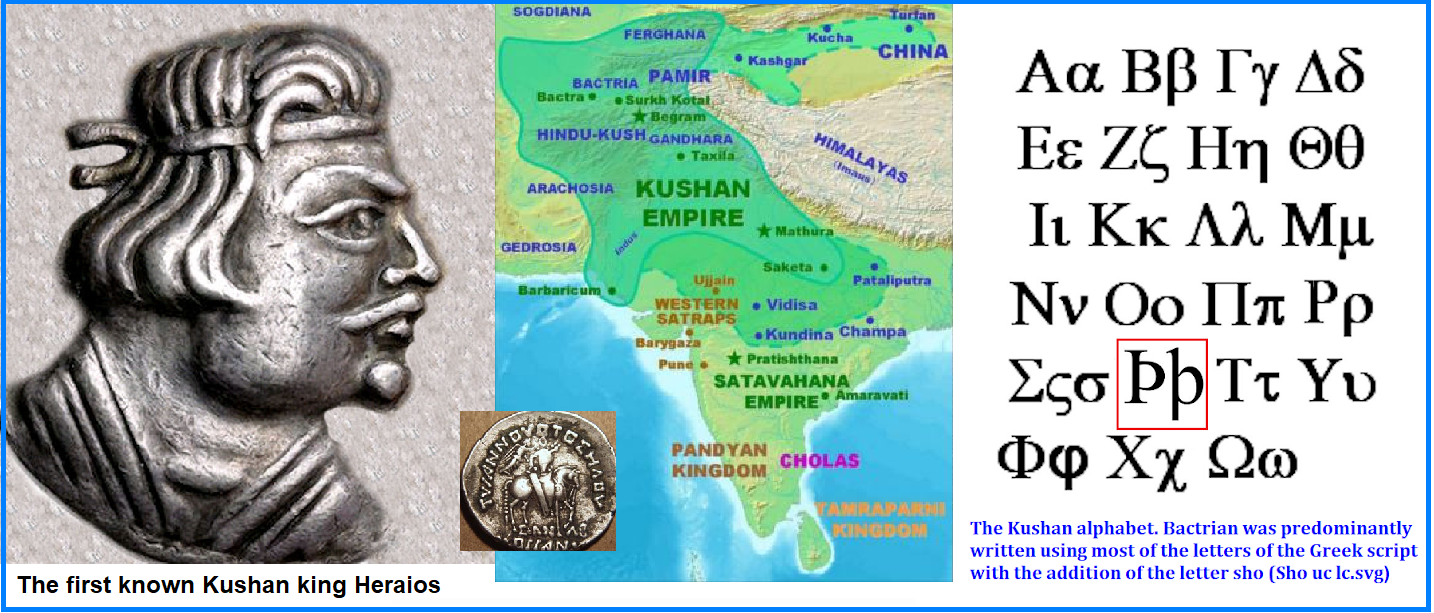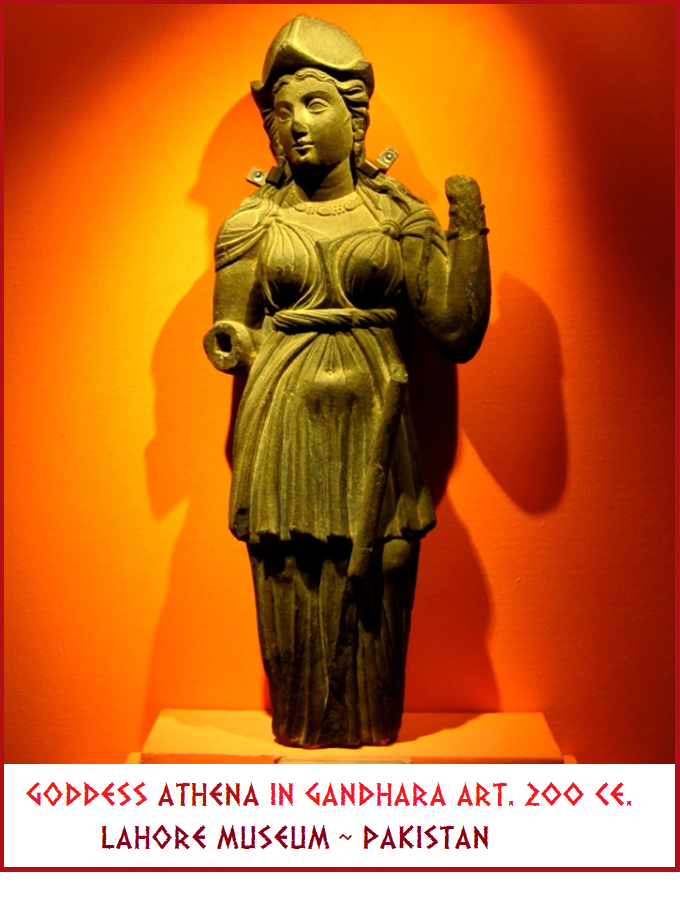THE HELLENISTIC KUSHAN EMPIRE
 •
by
•
by Dionysos Zagreas

The Kushan empire was a syncretic empire formed by Yuezhi, a confederation of nomadic pastoralists, who migrated from the arid grassland area in the northwestern part of the modern Chinese province of Gansu and settled in the territories of ancient Bactria. The Yuezhi reached Bactria (northwest Afghanistan and Tajikistan) around 135 BCE and gradually wresting control of the area from the Scythians and the Parthians, they progressively moved south into the northwest Indian region, traditionally known as Gandhara (present-day regions of Pakistan and Afghanistan) and established their capital near modern-day Kabul.

The rule of Kanishka, the third Kushan emperor, who flourished from the late 1st to the early/mid- 2nd century CE was administered from two capitals: Purushapura (now Peshawar) and Mathura in northern India. Under Kanishka’s rule, at the height of the dynasty, the Kushans controlled a large territory ranging from the Aral Sea through areas that include present-day Uzbekistan, Afghanistan and Pakistan, having infiltrated into northern parts of the Indian subcontinent as far east as Benares and as far south as Sanchi. It was also a period of great wealth, marked by extensive mercantile activities and a flourishing of urban life, Buddhist thought and the arts. Under the rule of the Kushans, northwest India and adjoining regions participated both in seagoing trade and in the commerce along the Silk Road to China.

Initially the Kushans used the ancient Greek alphabet and language for administrative purposes, but soon afterwards they switched to use the Bactrian language, whose alphabet was basically the Greek one, apart from minor differences. Kujula, founder of the Kushan empire, was the first ruler to strike gold coins which were used as official coinage and exchanged along the caravan routes. Most of Kujula’s coins were Hellenic in inspiration.
Some coins used the portrait, name and title of the Indo-Greek king Hermaeus on the obverse, indicating Kujula’s wish to relate himself to the Indo-Greek king.
Since the Kushans and their predecessors, the Yuezhi, were conversant with the Greek language and Greek coinage, the adoption of Hermaeus could not have been accidental: it either expressed an affiliation of Kujula to Hermaeus by alliance, or simply a wish to show himself as heir to the Indo-Greek tradition and prestige, possibly wanting also to accommodate Greek populations.

These coins bear the name of Kujula with representations of the Greek demi-god Heracles on the back, and titles presenting Kujula as a “ruler” (not an actual king), and Buddhist (“Dharmathidasa”, follower of the Dharma).
Later coins, possibly posthumous, did describe Kujula as “Maharajasa”, or “Great King”. Centuries later, the emperor Kanishka became a great patron of Buddhism and as the Kushan empire expanded southward toward the Indian subcontinent, the deities of their later coinage came to reflect its new Hindu majority. A direct road from Gandhara to China remained under Kushan control for more than a century, encouraging travel across the Karakoram and facilitating the spread of Mahayana Buddhism to China.

The term 'Kushan art' refers to a variety of artistic expressions that developed under the rule of the Kushan dynasty during the first three centuries of the Common Era, on a territory spreading broadly between north of the Oxus River and the Gangetic plain in North India. Artistic productions fall mainly into two branches: works in the service of the dynasty and works in the service of religion, principally Buddhism, but also Brahmanism and Jainism. Certain scholars might find the expression “art of the Kushan period” more adequate than that of “Kushan art.” Nevertheless, these heterogeneous artistic expressions reflect a common pattern in that they all result from the assimilation and re-elaboration of an eclectic cultural and artistic repertoire.

The Gandhara region at the core of the Kushan empire was home to a multiethnic society tolerant of religious differences. Desirable for its strategic location, with direct access to the overland silk routes and links to the ports on the Arabian Sea, Gandhara had suffered many conquests and had been ruled by the Achaemenids, Alexander the Great, his Indo-Greek successors (3rd-2nd centuries BCE), and a combination of Scythians and Parthians (2nd–1st centuries BCE). The fusion of populations, traditions and religious beliefs produced an eclectic culture, vividly expressed in the visual arts produced during the Kushan period. Initially themes deriving from the Greek Religion were very common, while later, the Buddhist imagery became dominant, with some of the first representations of the Buddha in human form dating to the Kushan era, as do the earliest depictions of bodhisattvas.
Source ~ https://greekasia.blogspot.com/2020/01/the-hellenistic-kushan-empire.html


Comments
first comment o7
Thank you !!
Ωραίο άρθρο !
o7
Interesting!
o7
o7
Persian empire was there. Also Alexandros the Great was there. This mean hellenism 100%
cool.....
nice article nice images